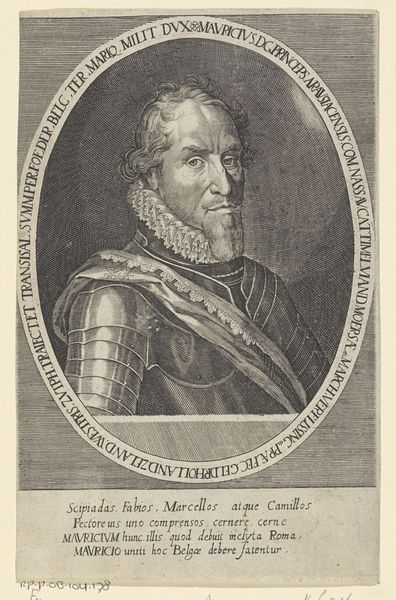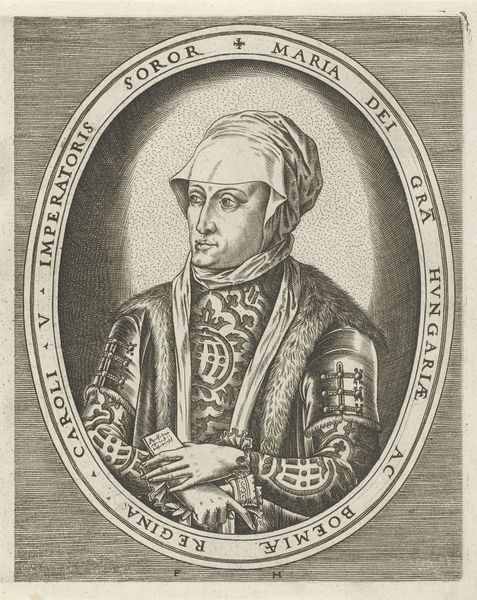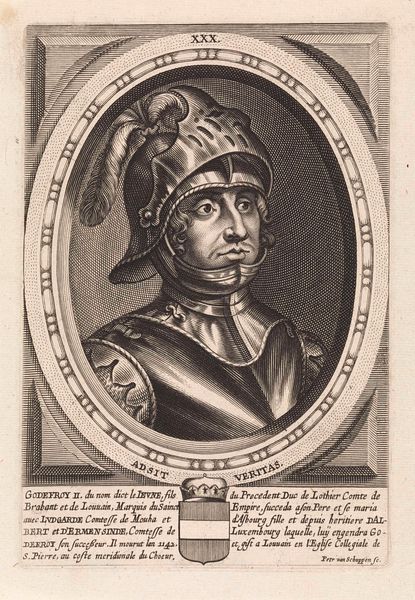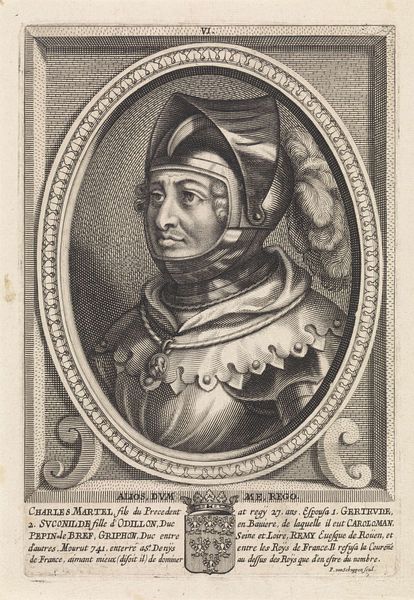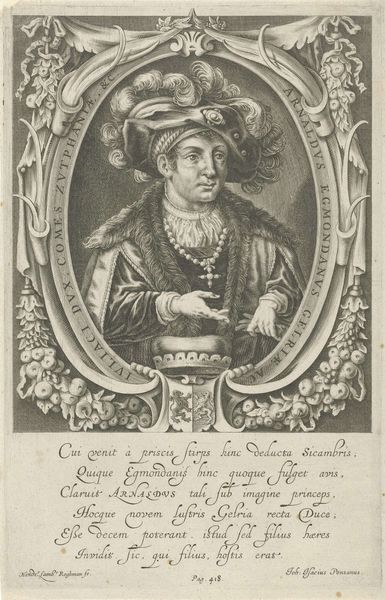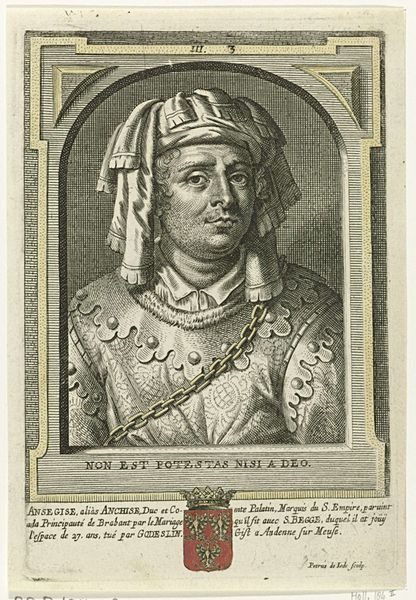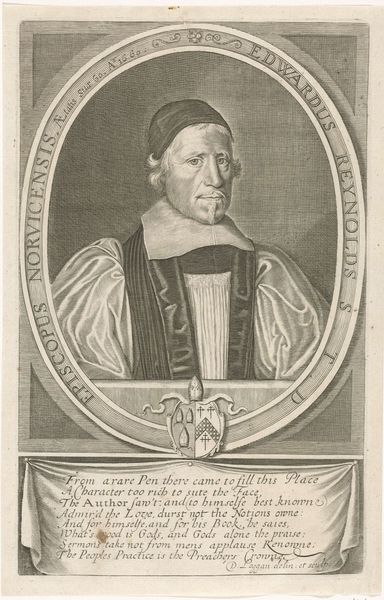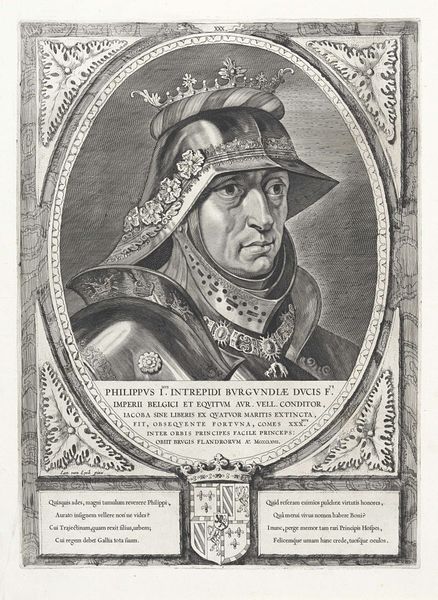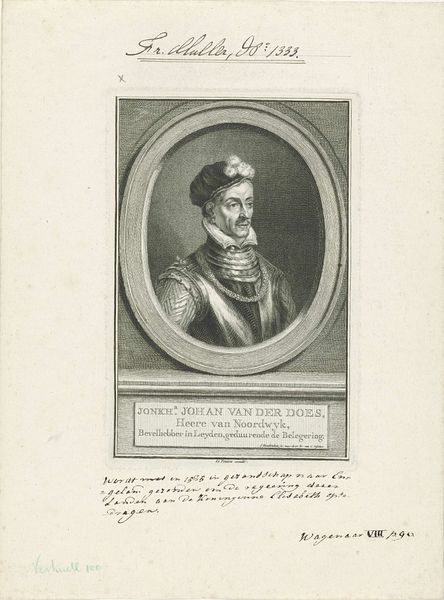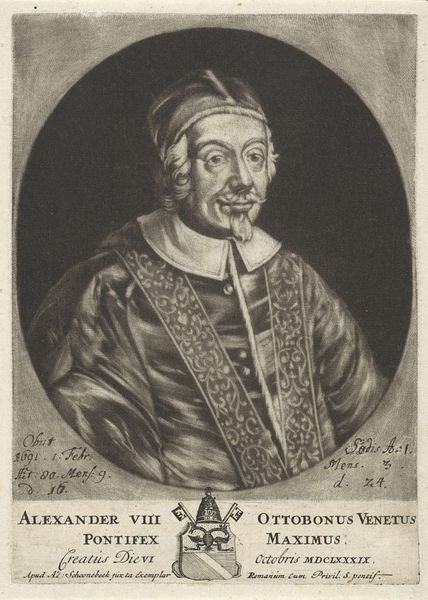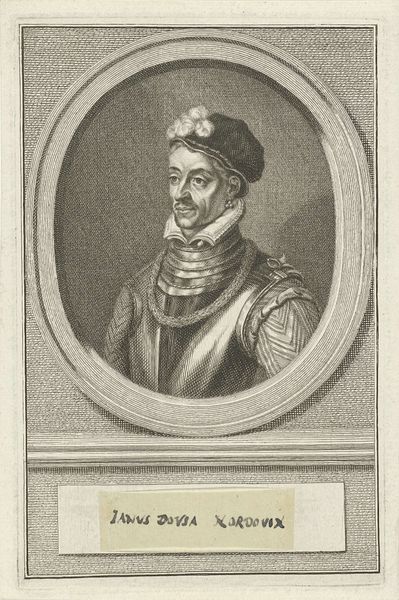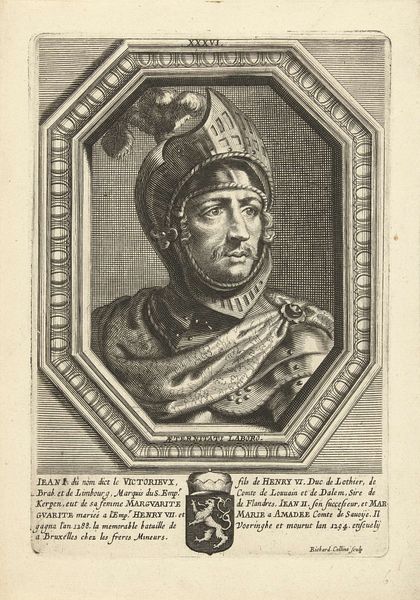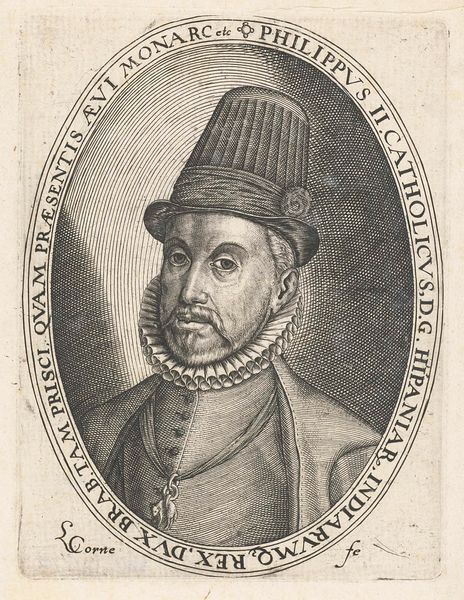
Dimensions: height 179 mm, width 108 mm
Copyright: Rijks Museum: Open Domain
Curator: At the Rijksmuseum, we have an engraving dating to 1786. It's Jan Punt’s “Portret van Maria van Hongarije, landvoogdes der Nederlanden"—Portrait of Maria of Hungary, Governor of the Netherlands. Editor: The piece has an austere formality. It seems to be on aged paper; the linework is incredibly precise. It’s almost unnervingly detailed. Curator: Jan Punt was a Dutch engraver and designer. As you can see, he used precise lines to depict Maria within an oval frame set against a grid-patterned background, mimicking stone or perhaps textile work. This attention to background planes gives an impression of shallow depth, pressing the image forward toward the viewer. Editor: And it forces the viewer to truly study the production and the material reality of the print itself. Look closely, and you'll notice that every single line tells a story about labor, craftsmanship, and ultimately, the process. What would such an image signify? It's not about fleeting beauty but about enduring value produced from carefully made items. Curator: Exactly. Engravings like this portrait circulated widely. Their value lies not just in their aesthetic qualities but in their capacity to reproduce and disseminate imagery—especially of powerful figures like Maria of Hungary, which reinforces political and social structures. Editor: It becomes a tool for managing Maria's image, shaping how she was seen and remembered within the political landscape of the Netherlands. How might an audience interact with that public representation of authority, I wonder? Curator: Consider that Punt was working decades after Maria’s death. It’s a retrospective look, cementing her legacy but also filtered through evolving political views. This portrait speaks to how history is actively shaped. Editor: And how representation and production intersect! The choice of materials—the ink, the paper—were crucial components in forming a political tool, designed to convey Maria's gravitas. It serves as a subtle yet profound display of status. Curator: So, it really prompts you to consider how representations of power function—within a specific political and social context. Editor: Absolutely. Thinking about Punt’s method encourages viewers to understand the active process through which power is portrayed. Curator: A beautiful intersection of technique, political purpose, and enduring history. Editor: A testament to how meticulously made materials hold and transmit potent narratives.
Comments
No comments
Be the first to comment and join the conversation on the ultimate creative platform.
